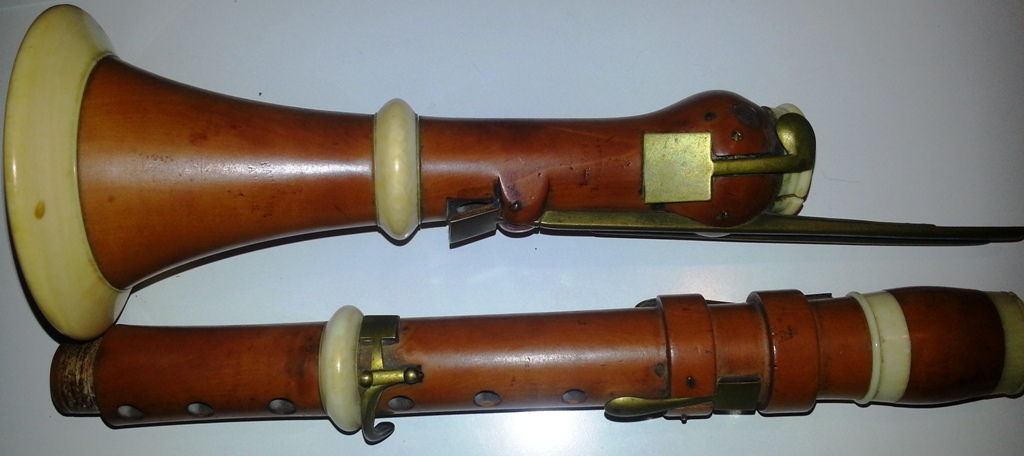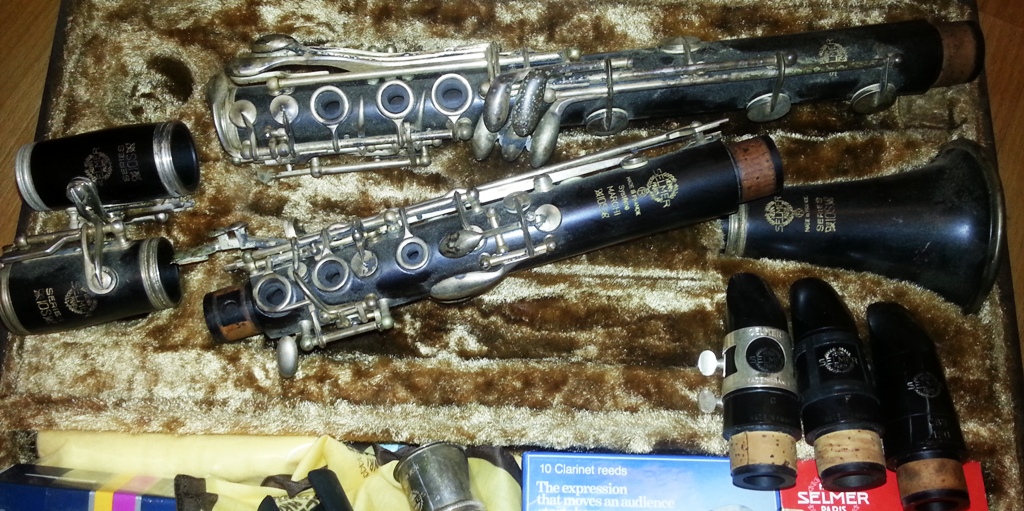Old Musical Instruments
Buying-Selling Early Musical Instruments
William Petit wpetit@sfr.fr Tel 00 33 6 13 12 43 22
Appraisal
Saxophones Selmer
Saxophones Adolphe Sax
Flûtes
Woodwind
Brasswind
Mandolins
Strings
Violin-Viola d'Amore-Quinton
Miscellaneous
Clarinets Amlingue, Simiot, Buffet, Baumann, Piattet, Winnen, Guerre, Buhner et Keller à Strasbourg, Lefevre, Muller
Invented around 1690, the clarinet is a single-reed woodwind instrument with a cylindrical tube.
The clarinet evolved from an earlier instrument called the chalumeau, the first true single reed instrument.
Johann Christoph Denner of Nuremburg with the help of his son Jacob improved the chalumeau, creating a new instrument called the clarinet.
Denner added two keys to the chalumeau and increased that instruments range by over two octaves.
He also created a better mouthpiece and improved the bell end of the instrument.
In 1843, the clarinet was further improved when Klose adapted the Boehm flute key system to the clarinet.
Mozart was the first composer to use the clarinet in a symphony.
The history of the clarinet continued to develop as two-keyed clarinets underwent a variety of improvements and were introduced to France and England.
By about 1750, the clarinet body had taken the basic shape we see today, but the keywork continued to evolve.
In about 1780, five keys were being used. And by 1820 or 1830, clarinets were commonly in use that had 12 or 13 keys.
By 1850 or so Boehm system keywork had been introduced.
This system, based on the keywork then being used on the flute, managed to eliminated some very difficult fingerings.
It is the system most commonly used today although Albert fingering systems are also still in use, primarily in Europe
In the mid to late 1700's, composers had begun writing musical pieces that included, or were specifically written for, clarinets.
The instrument became much more prominent in the 1800's, and large volumes of music were written for it in the early 1900's.
Today, there are minor variations in different models.
Manufacturers use slightly different bore diameters and shapes, and occasionally additional keys. Most modern clarinets have 17 or 18 keys.
The new musical instruments are on my new website https://www.instruments-anciens.com/nouveautes
Website available on all devices :smartphones, tablets... Both websites are still online
|
|
|
Boxwood Clarinet Noe frères Bb |
|
Boxwood Clarinet by Petit Jean
|
|
|
|
Clarinet Bauman Eb Hight
|
|
|
|
Rare Clarinette SELMER Système MARCHI Il met au point un système qui, tout en gardant la technique du système dit Boehm, permet - grâce à quelques clés supplémentaires, dont une clé d'harmonique favorisant les 17°- d'obtenir une étendue beaucoup plus grande vers les aigus et avec plus d'aisances d'émission et de liaison . Il confie la réalisation de cet instrument à la Maison SELMERDans les années 1960, Joseph Marchi est directeur du Conservatoire et de l'Harmonie de Sète puis devient professeur de clarinette au Conservatoire de Marseille Sold |
|
|
|
Clarinet Buhner et Keller Strasbourg Bb Sold |
|
|
|
Boxwood Clarinet Bb by Winnen Sold Boxwood Clarinet C by Baumann Sold |
|
|
|
Clarinet By Darche Paris Bb Sold |
|
|
|
Clarinet by Guerre Eb Hight Sold |
|
|
|
Clarinet by Raingo Mons XVIII em Century |
|
|
|
Double -Walled Metal Clarinet By Couesnon Sold |




